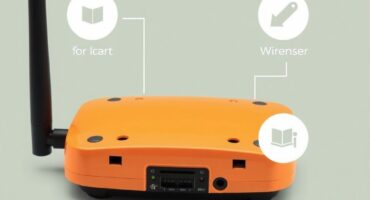In today's fast-paced world, change is like a river tha...
There is No Autonomous Network Without Observability
In the rapidly evolving world of networking, the concept of autonomous networks has gained significant attention in recent years. The idea of a self-healing, self-configuring, and self-optimizing network sounds like a dream come true for network administrators and organizations alike. However, achieving true autonomy in networks is impossible without a critical component: observability.
What is Observability?
Observability refers to the ability to measure, monitor, and understand the internal state of a system. In the context of networking, observability involves collecting and analyzing data from various sources to gain insights into network performance, behavior, and health. This includes metrics such as latency, packet loss, and throughput, as well as logs, events, and other telemetry data.
Observability is often confused with monitoring, but they are not the same thing. Monitoring involves watching for specific problems or conditions, whereas observability involves understanding the underlying causes of those problems. In other words, monitoring tells you what’s happening, while observability tells you why it’s happening.
The Importance of Observability in Autonomous Networks
Autonomous networks rely on advanced algorithms and machine learning techniques to make decisions and take actions. However, these algorithms require high-quality data to function effectively. Without observability, autonomous networks are essentially flying blind, making decisions based on incomplete or inaccurate information.
Here are some reasons why observability is essential for autonomous networks:
- Data-driven decision-making: Autonomous networks need data to make informed decisions. Observability provides the necessary data to drive these decisions, ensuring that the network is optimized for performance, security, and reliability.
- Self-healing and self-optimization: Autonomous networks rely on observability to detect anomalies and issues, and to take corrective action. Without observability, the network may not even be aware of problems, let alone be able to fix them.
- Security and threat detection: Observability is critical for detecting security threats and anomalies. Autonomous networks can use observability data to identify potential threats and take proactive measures to prevent attacks.
- Capacity planning and optimization: Observability helps autonomous networks to understand capacity utilization and plan for future growth. This ensures that the network is always optimized for performance and can adapt to changing demands.
Key Components of Observability
Observability is not just about collecting data; it’s about collecting the right data and using it to gain insights. Here are some key components of observability:
- Telemetry data: This includes metrics, logs, events, and other data that provide insights into network performance and behavior.
- Data analytics: This involves using advanced analytics techniques to process and analyze telemetry data, providing insights and recommendations for network optimization.
- Visualization: This involves presenting observability data in a clear and concise manner, making it easy for network administrators to understand and act on the insights.
- Automation and integration: This involves integrating observability data with automation tools and workflows, enabling autonomous networks to take proactive measures to optimize performance and security.
Benefits of Observability in Autonomous Networks
The benefits of observability in autonomous networks are numerous. Here are some of the most significant advantages:
- Improved network performance: Observability helps autonomous networks to optimize performance, reducing latency and packet loss, and improving overall network reliability.
- Enhanced security: Observability enables autonomous networks to detect security threats and anomalies, reducing the risk of attacks and data breaches.
- Increased efficiency: Observability automates many routine tasks, freeing up network administrators to focus on more strategic initiatives.
- Better decision-making: Observability provides network administrators with the insights they need to make informed decisions about network optimization and planning.
Challenges and Limitations of Observability
While observability is essential for autonomous networks, there are several challenges and limitations to consider:
- Data quality and accuracy: Observability relies on high-quality data to function effectively. Poor data quality or accuracy can lead to incorrect insights and decisions.
- Scalability and complexity: As networks grow in size and complexity, observability becomes increasingly challenging. Autonomous networks must be able to handle large volumes of data and complex analytics workloads.
- Security and compliance: Observability data can be sensitive and must be protected from unauthorized access. Autonomous networks must ensure that observability data is secure and compliant with relevant regulations.
- Integration and interoperability: Observability requires integration with various systems and tools. Autonomous networks must ensure that observability data can be easily integrated with other systems and workflows.
Conclusion
Autonomous networks are the future of networking, but they are impossible without observability. Observability provides the necessary data and insights for autonomous networks to make informed decisions, optimize performance, and detect security threats. While there are challenges and limitations to consider, the benefits of observability in autonomous networks are clear. As networks continue to evolve and become more complex, observability will play an increasingly critical role in ensuring their performance, security, and reliability.
In the end, observability is not just a feature or a tool; it’s a fundamental requirement for autonomous networks. Without observability, autonomous networks are simply not possible. As we move forward into the era of autonomous networking, it’s essential that we prioritize observability and make it a core component of our network architecture.

